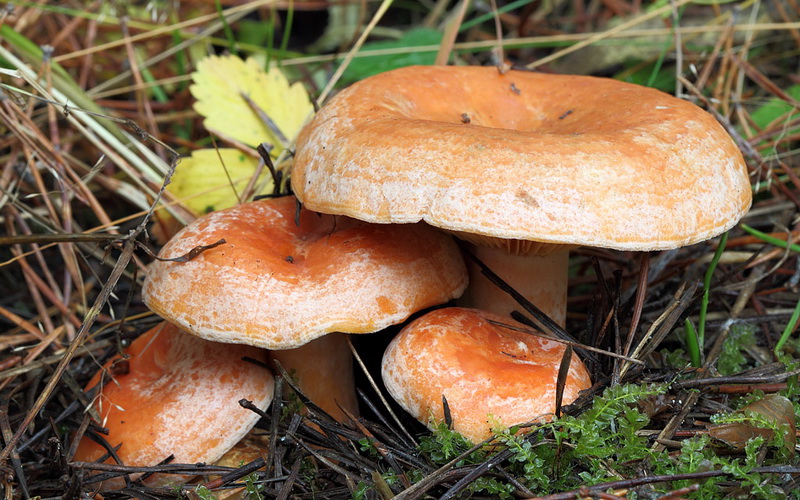
All about saucers.
The content of the article
- Ginger mushrooms - views, how they look, what a hat they have, edible or not: photos, description
- Mushrooms Redies: benefits and harm to humans
- Sosnovy mushrooms: photos, where are they growing?
- Mushrooms Ryzhiki: How to distinguish edible from false?
- With what, with what mushrooms can you confuse saffron?
- How to distinguish saffron from the waves of edible and false: signs
- Where, in which forest, the mushrooms grow, when do they appear, when to collect?
- Is it possible to collect saucers after frost?
- Why are redheads after freezing?
- Video: Red -ows how and where to quickly dial this delicious mushroom?
Autumn is not only a time when they stock up on the crop, but also the time when mushrooms are collected. The saucers got their name because of a bright red color (and sometimes, they are even reddish). Such mushrooms are valued not only as a delicious product, but also as a healthy potion. By the way, some of its species are considered delicacies.
Ginger mushrooms - views, how they look, what a hat they have, edible or not: photos, description
Naturally, sailors of various species can slightly differ in external data and taste qualities from each other. Also, the names also depend on in which areas of the forest you can find these handsome people. Let's look at the most common species.
Real Ryzhik:
Keep in mind! There are also names such as a pine or ordinary red -haired, as well as autumn or noble. These are all the names of the same species.
- The color of this representative is included in the range from the yellow - brown shade to dark - orange tone.
- The size, of course, can be completely different. The hat of the largest mushroom reaches 18 cm in diameter. The smallest, about 3-4 cm somewhere. But the average real redders have a hat within 7-8 cm in diameter.
- Like all saffronies, the hat has a funnel -shaped shape with wrapped edges. Sometimes a tubercle may occur in the center.
- By the way, in raw weather, the hat becomes a sticky.
- The leg, of course, depends on the size and age of the mushroom itself. On average, in diameter it is 1.5-2 cm, and the height is about 2-6 cm.
- The color of the legs is the same as that of the hat. But it can be 1-2 tones lighter. And yet, at the base it is a little narrowed.
- And also, it can be covered with a small hole or a light fluff.
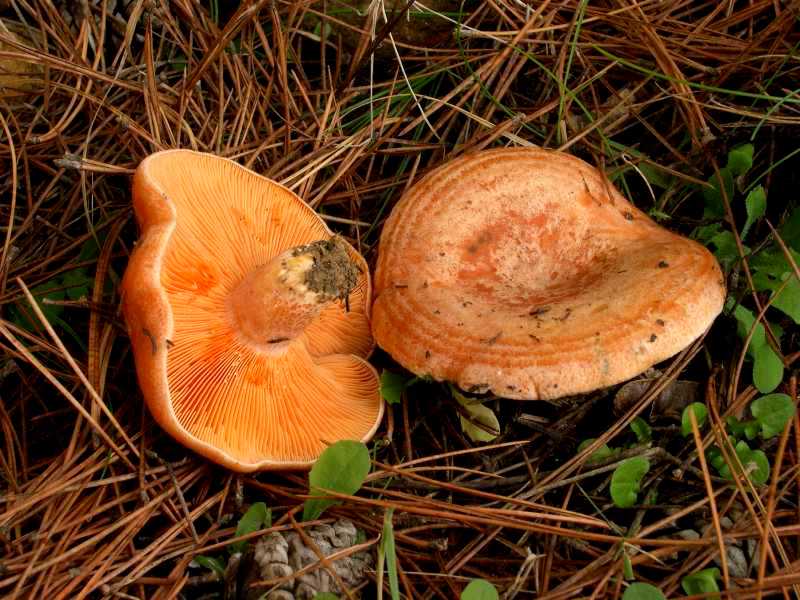
Ryzhik
- The pulp, like all saffronies, is dense and orange (can have a yellowish tint). And such a feature - when breaking, the pulp acquires a greenish tone. But soon he disappears.
- The juice is also orange and thick in consistency. And in the fresh air it acquires a slightly greenish color.
- And one more nuance - the real saffronies on the hat can have light rings, and sometimes even a small white plaque.
Red red:
- The name already speaks for itself. The color of this species is saturated - orange, sometimes it can have a pink shade.
- The surface itself is smooth, shiny and not sticky, like the previous version.
- The hat can reach approximately the same size, somewhere from 5 to 17 cm. But the average dimensions that most often collect mushroom pickers are 5-6 cm each.
- The leg can reach up to 8-9 cm in height, and upwards are slightly wider at the base.

Red red
- By the way, the leg is also dotted with small pits that have red.
- The main feature is juice. The juice of saturated red color, and sometimes even there can be a bloody shade.
- The pulp has a white tone with red interspersed. It is quite dense, but brittle.
- The shape of the hat itself, like all saffronies, pressed in the center and has bent edges.
- There are no white rings on the hat.
Spruce redhead:
- This representative is slightly smaller. The minimum parameters of the hat are 2 cm, and the maximum is 7-8 cm.
- The leg, of course, is also smaller-2-5 cm, and its thickness is up to 1.5 cm.
- The hat itself, in the beginning, has a tubercle in the middle and bent edges, but then it becomes funnel -shaped with even edges.
- Like a real redhead, the surface is sticky.
- The spruce redhead seemed to unite two species described above. The flesh with a fracture has a red color, but gradually acquires a greenish tint.
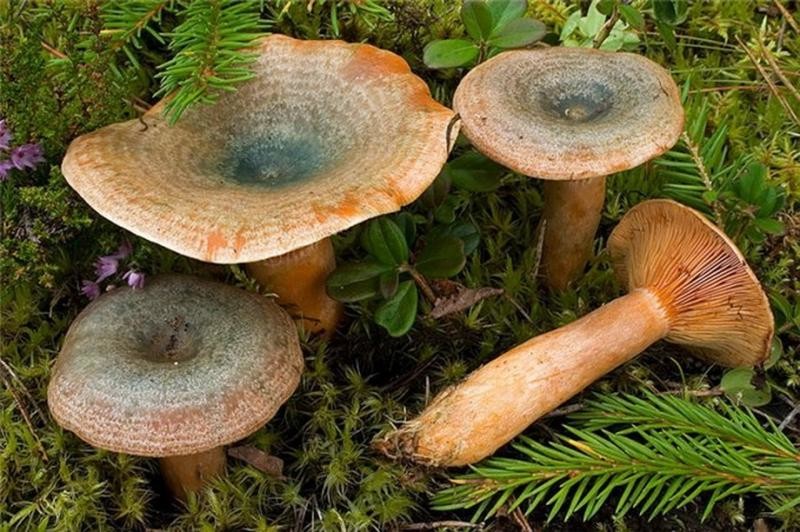
Red -haired spruce
- The juice of this mushroom is first saturated - orange, and sometimes even red. But, in contact with the environment, it becomes greenish.
- And the most important distinguishing feature is green spots on the hat itself. And also, they can be so much that it looks visually as a green plaque. Especially in the center of the funnel.
- By the way, therefore, such mushrooms are also called green redders.
Mushrooms Redies: benefits and harm to humans
Regarding mushrooms, there are always many disputes about their benefits and negative effects on the body. Therefore, it is worth dwelling on this issue in more detail.
Benefit:
- Laktrioviolin is a natural antibiotic on which saffron is so rich in. This component helps to fight various bacteria. And even a connection was established that the Ryzhik helps in the treatment of tuberculosis.
- Its composition contains amino acids, which are considered the lightest for the body. By the way, in the process of cooking they practically do not change.
- A rich orange color is the merit of beta - carotene, which is indispensable for the eyes and vision.
- Antioxidants, in general, have a positive effect on our immune system.
- It also has a lot of salts of iron, potassium, calcium and magnesium, as well as sodium and phosphorus.
- For men, Ryzhik also acts as an aphrodisiac. Since it helps to raise potency.
- Selena has recently significantly attracted the attention of scientists. And it was found that this component reduces the risk of cancer and various tumors.
- The fungus perfectly affects the condition of the hair, nails and skin, which will undoubtedly appreciate many women.
- Ringer are considered a high -calorie product, which in energy value is at a level with beef or chicken meat.
- They can be consumed during a diet, then only in boiled or stew.
- Also, it should be noted that the redheads have a high protein content.

Ryzhik
Harm:
- Naturally, saffronies are contraindicated for those people who have any intestinal diseases or low acidity.
- And also, if there are problems with liver or kidneys. Such a delicacy should be postponed.
- Pregnant, nursing mothers and children under 6 years old, like any mushrooms, are also contraindicated. Because, still heavy for the stomach.
- Well, of course, the individual intolerance of some components affects.
- And not a big advice, you do not need to eat mushrooms for dinner or, especially, before bedtime.
Sosnovy mushrooms: photos, where are they growing?
Even the schoolboy will answer that mushrooms are growing in the forest. Yes, that's right. But, to find a pine redhead, you need to know some tricks. It is they who will help to find his secret place.
- Naturally, the name pushes the thought out. Yes, the saffronies live mainly in pine and sometimes in spruce forests. It is extremely rare to find among deciduous rocks.
- A small nuance that will help mushroom pickers - such mushrooms should be sought on the north side. Moreover, even on the north side of the trees. Since moisture is more preserved in the shade. And for the regions in which it is not enough, this is very useful.
- A real or pine redhead loves that there are not too many trees, so we prefer the places of deforestation or young pines.
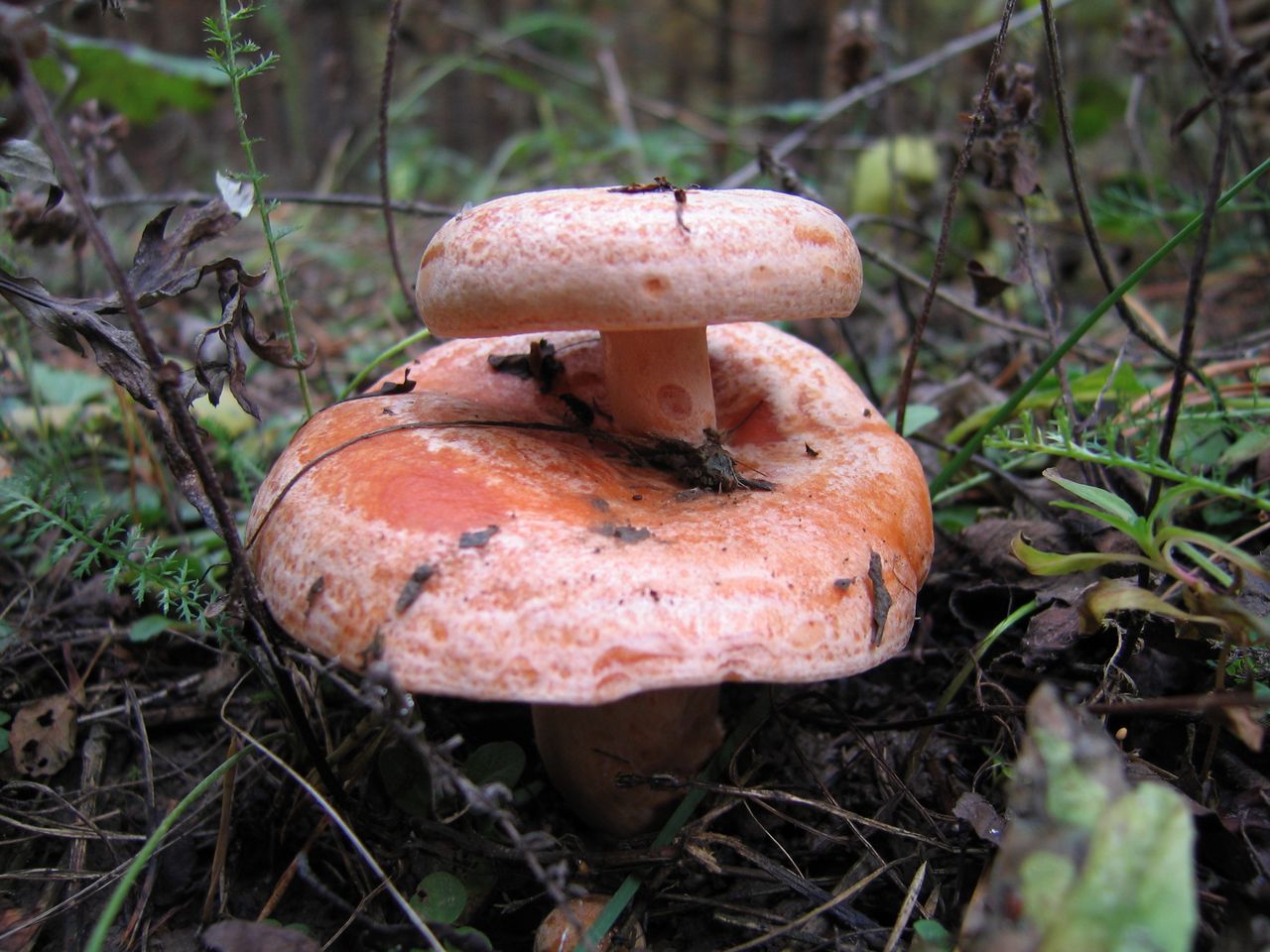
Pine red
- Another popular place among these mushrooms is the edge and forest glade. But often the shelter is chosen by large thickets of grass, so it is sometimes difficult to discern them. Also, often grows in moss.
- And a note - a pine redhead grows in groups (however, like any other mushroom). On average, it is about 10 pieces. But, there are cases of 30-40 units. Therefore, if you find one handsome man, then be sure to carefully look around. You may find the rest of its relatives. True, if someone did not come across them before you.
Mushrooms Ryzhiki: How to distinguish edible from false?
In principle, it is worth immediately noting that all saffronies are considered edible mushrooms. Only representatives of other classes can make exceptions that outwardly can be very similar to mushrooms of saffron.
- Therefore, the answer is still ahead of the question - no! In the nature of false sausages or some of its doubles, it does not exist. But an inexperienced mushroom pickered, most likely, confused the real red -haired man (this does not mean a type of mushroom) with a completely different class.

Redcles
- And I want to reassure the rhinestone that you do not need to worry. Even if in your basket it turned out to be absolutely not a redhead, it is still suitable for eating.
- The only one, depending on which mushroom you have found (below we will consider who you can confuse the sausage with), the taste can differ greatly. For example, some may be a little bitter. But there are also mushrooms that need prolonged heat treatment. Since it can even cause poisoning of the body.
IMPORTANT: In order not to confuse saffronies with other mushrooms, check the pulp and its juice. The above has already indicated what these characteristics should be. This is the very first and important distinguishing feature! Similar mushrooms are different.
With what, with what mushrooms can you confuse saffron?
There are several classes of mushrooms, which are very similar to the saucers. And the fault of everything is a funnel -shaped hat and an orange (or similar to it) color. If you are not an expert in collecting mushrooms (and indeed, it is better to do it to everyone), break a little mushroom. Carefully study its pulp, and what kind of mushroom the juice has launched!
- Road (or Large Large):
- It is similar to the redings of his hat, it also has a funnel -shaped shape and bent edges. An experienced mushroom picked, of course, will be surprised how they can be confused at all. But, nevertheless, this mushroom falls on the list of those who are deceptive like saucers.
- His hat has a brown color, but with a gray tint.
- It also grows in coniferous forests, but prefers sandy soil not with such an abundance of grass.
- And the main distinguishing feature is the pulp and white juice!
- And also, there is a slight smell of coconut.
- Fragrant miller:
- This mushroom is also considered conditionally edible.
- Outwardly, a little similar to the redhead is the hoarse color of the hat. But in a miller it can have a pink or gray shade.
- The main difference is the pulp and white juice.
- Another miller is amber:
- This mushroom is not edible!
- It has a more pronounced pink color.
- If you break a small piece, you can see the yellow pulp. The juice remains white.
- The smell is strong, a little like a lover.
- The mushroom is not poisonous. Therefore, if you touch him a little tongue, you can feel bitterness and even burning. No, you do not need to lick all the mushrooms. Simply, take note if any mushroom makes doubts.
How to distinguish saffron from the waves of edible and false: signs
With this type of mushroom, fish are most often confused. And, yes, mostly inexperienced mushroom pickers are basically again. Therefore, it is worth dispelled all the delusions. Especially if you want to become a professional. The fact is that between these two mushrooms there are a number of differences.
- The only thing that unites them is the class of MLOSK. Well, and a little similar appearance. But this is only at first glance. Now we are talking about a pink wave, a white look, of course, cannot be confused with a redhead.
- A cap, yes, has a similar shape, and even color. But the wave has a more pink shade, and sometimes grayish. And the main difference is the presence of a small gun on a hat. And the ends can be completely covered with it.
- Also, dark spots will appear from touch on the surface.

Wall
- And, of course, the pulp and juice have white color, and when contacting the air do not darken.
- Geographical difference - Volnushki grow under birch. This is their favorite tree. In coniferous forests, they are very rare. But the north side is also loved more.
- Regarding false waves, this is also a myth. At least, there are no inedible mushrooms that are not like with them. And the waves themselves are considered conditionally edible.
- This means that they need to be soaked for a long time (approximately 2-3 days) and cook for at least half an hour. If you soak the insufficient time, then the cooking process increases.
- The waves themselves are often confused with the Moleknik. But in the previous paragraph we examined what the main rule when choosing a mushroom. And what kind of juice and pulp of similar species of the Mlechnik also indicated higher.
Where, in which forest, the mushrooms grow, when do they appear, when to collect?
We have already talked about a pine red. It can be called universal and most popular among their relatives. All saucers prefer pine, Christmas or mixed (much less often) forests.
- Red redhead is often found under an ordinary or cedar pine. It is extremely rare, you can meet in a spruce or mixed forest. Like any mushroom, loves to hide behind tall and thick grass.
- The spruce redhead, of course, grows only under the spruce. And he chooses young trees, but not lonely. Such a mushroom loves a thick forest.
- All types of red -haired people love the northern side. Therefore, you need to start looking for from this side.
- And a little advice! Ryzhikov has geographically friends. If in July you came across mushrooms such as oil, then two months later come to the same place behind the saffron.
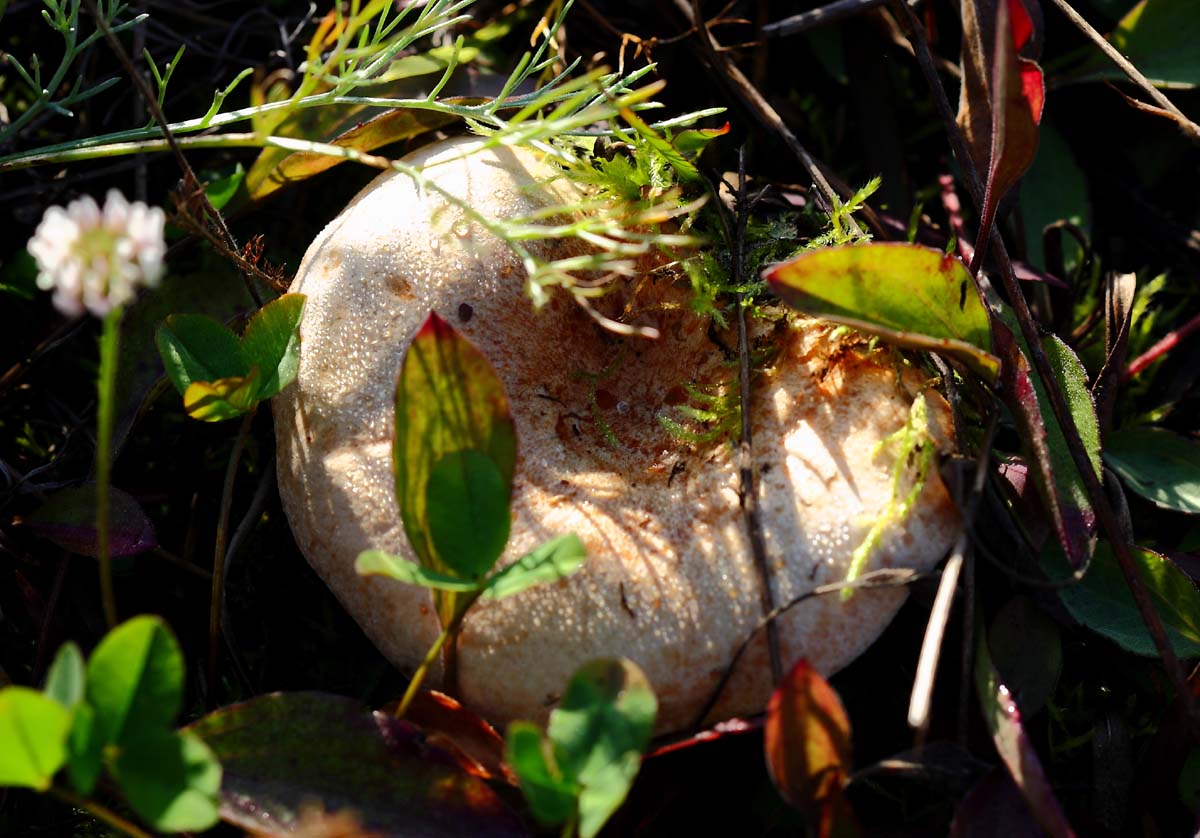
Rush in the forest
- It is worth examining the tubercles and protrusions in the forest. And in order to remove the foliage without damaging the mushrooms, you should get a stick.
- Of course, it is worth collecting them after the rain (preferably abundant) from the middle of July to October. But the peak itself is the end of August - the middle of September. This month, you can replenish the stocks of a redhead as much as possible and prepare for the winter.
- Naturally, it is more convenient to collect mushrooms in sunny weather. But experienced mushroom pickers advise, to go out early in the morning. Until there is still dew. Thus, the hats will shine in the sun, and they will be more noticeable.
Is it possible to collect saucers after frost?
The optimum temperature for saffron is 10 ° C with a plus sign (a maximum of 15 ° C). It is in such weather that the saucers grow like "mushrooms after the rain." But! If the temperature dropped to the boundary of 6-8 ° C, and even lasted more than 3 days, then collecting saffronies are not recommended. Since, not only their beneficial qualities are lost, but also taste. And also, after prolonged coolness, the red -haireds can turn green. Agree, a very unappetizing look of green mushrooms.
Why are redheads after freezing?
Freezing is now very popular. And the matter concerns not only vegetables or fruits, but also mushrooms are suitable for such a procedure. Although, some do not like the appearance after defrosting, and even the taste. It is especially often noted that after freezing, the saucers are hot.
- The first thing that can influence is the territory of growth. After all, they love conifers, and they can give mushrooms with a bitter taste. To remove bitterness, it is worth boiling (5-10 minutes) red-lizards in salt water, adding a couple of a pinch of citric acid.
- Perhaps you did not rinse well or process the reserves themselves. And somewhere there was a little pollution, which causes bitterness. Of course, first of all, they need to be thoroughly washed. And then, blanch for 4-5 minutes. Water should be salty - this is an important requirement.
Although this is also considered late mushrooms, the old specimens do not need to be frozen. Since, after defrosting, they can also be bitter. And in old mushrooms, harmful toxins can accumulate. Salt and citric acid will help you, but it is still better to choose young saucers. And not only for freezing, but also for other preparations.
